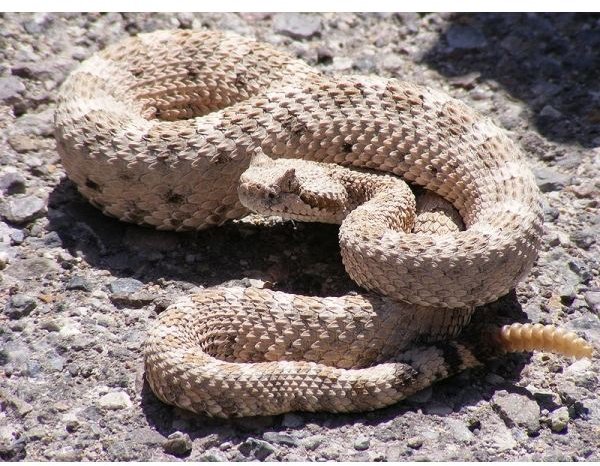Rattlesnake Facts: Learn about the Rattlesnake's Habitat, Behavior, Diet, & More
The Rattlesnake
All rattlesnakes (about 30 species) live within the western hemisphere, mostly in the southern parts of the US, Mexico, and Central America. All belong to the Viperidae family (pit vipers), have rattles, and are venomous.
Most rattlesnakes are 3-4 feet in length and, like all pit viper snakes, have pits on each side of their head that can sense heat. The pits allow them to detect a difference in temperature (to a fraction of a degree) so they can locate their warm-blooded prey. Below are more interesting rattlesnake facts.
Rattle
The rattle is a series of hollow segments. At birth, the baby does not have a rattle. Each time it sheds its skin, it will produce a segment. Young rattlesnakes usually shed 3-4 times a year. As they age, fewer are produced and old segments begin to break off (making it impossible to tell their age by the rattle).
The noise made by the rattle is from the segments knocking together when shaken. When the rattlesnake is alarmed, it will create this sound to warn the intruder. The sound they make can be heard about 60 feet away. If the rattle was to become too wet (absorb a lot of water), it will not make noise.
Behavior
Rattlesnakes differ in temperament depending on the species. Normally, most will flee from humans if they do not feel threatened. However, if startled or provoked, they will most likely strike. These powerful snakes can strike at distances up to 2/3 of their body length. A coiled snake can strike at an incredibly fast speed.
Venom
Rattlesnakes are equipped with fangs that fold back in the mouth when not striking. From the time they are born, they are able to inject poisonous venom when biting. These remarkable snakes have the ability to regulate how much venom to inject. Normally they inject a full dose but at times they deliver less or none at all (25% of bites from adults are without venom). Baby snakes have less control so they are actually considered to be more dangerous because they simply inject it all. When rattlesnakes are injured or frightened, they may not exercise such control.
If bitten by a rattlesnake and not treated, death is most likely. If treated with an antivenom in time, the chances of death are greatly decreased (less than 4% die).
Diet
Rattlesnakes eat small, warm-blooded animals, including mice, rats, squirrels, rabbits, and birds. They catch their prey with their venomous bite which normally kills them within seconds. If it doesn’t kill them quickly and the prey attempts to escape, the rattlesnake will follow them until they die.
Reproduction
Mating season starts in the spring after their winter hibernation. Unlike most North American snakes that lay eggs, rattlesnakes give live birth. Normally they give birth to 8-10 babies that are about 10 inches in length. As soon as they are born, they are self-sufficient. They can hunt and they can defend themselves. Because of this, the mother does not stay with her young.
More Information
The following are more interesting rattlesnake facts:
- The eastern diamondback is the largest rattlesnake (about 8 feet).
- The Mojave is the most dangerous.
- The Sidewinder is the least toxic.
- The average lifespan of a rattlesnake is 20 years.
Photo Credit
Image courtesy of https://en.wikipedia.org/wiki/File:Crotalus_cerastes_mesquite_springs_CA.JPG
